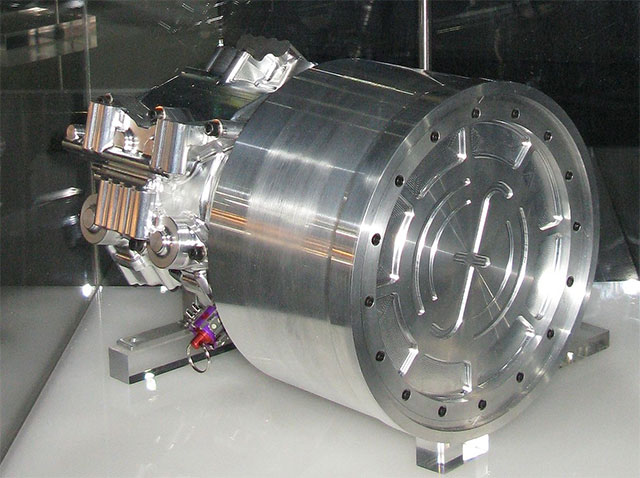Kinetic Energy Recovery System, or KERS, is an innovative technology that was initially developed for Formula One (F1) racing cars. KERS technology allows race cars to recover energy lost during braking and store the energy in a battery.
But could KERS be used in private cars?
Table of Contents
Kinetic Energy Recovery System How It Works
This article will take a look at Kinetic Energy Recovery System technology, its benefits, and whether we can expect to see it in our everyday vehicles.

What is KERS?
KERS technology captures the energy that is usually lost during braking and converts it into electrical energy. This energy is stored in a battery, which can then be used to give an additional boost of power during acceleration. The system works by using a motor generator unit, which is connected to the car’s drivetrain.
When the driver brakes, the motor generator unit converts the kinetic energy of the car into electrical energy, which is stored in the battery.
When the driver accelerates, the motor generator unit reverses the process and converts the stored electrical energy back into kinetic energy, providing an additional burst of power.
The Benefits of KERS Technology
KERS technology offers several benefits for race cars, including:
- Improved performance: By providing an additional burst of power during acceleration, KERS can improve a car’s overall performance on the track.
- Reduced fuel consumption: Because KERS allows race cars to recover lost energy that would otherwise be lost during braking, it can help to reduce fuel consumption.
- Environmental benefits: By reducing fuel consumption, KERS can help to reduce the carbon footprint of F1 racing.
- But could KERS technology also be beneficial for private cars? There are certainly potential benefits to using KERS technology in everyday vehicles, including:
- Improved fuel economy: Just like in F1 racing, KERS technology could help to reduce fuel consumption in private cars by allowing energy to be recovered during braking.
- Enhanced performance: KERS technology could provide an additional burst of power during acceleration, which could improve a car’s overall performance.
- Cost savings: Using KERS technology could potentially lead to cost savings for drivers, as they would need less fuel to travel the same distance.
Challenges to Implementing KERS in Private Cars
While there are potential benefits to using KERS technology in private cars, there are also several challenges that need to be overcome before it can become a reality. Some of these challenges include:
- Cost: KERS technology is currently expensive, which means that it may not be feasible for use in everyday vehicles.
- Space: KERS technology requires space to store the battery, which could be challenging in smaller vehicles.
- Weight: The additional weight of the KERS system could also be a concern, as it could negatively impact a car’s performance and fuel economy.
- Complexity: KERS technology is complex and requires sophisticated control systems to ensure that it operates effectively and safely.
- Safety: There are also safety concerns associated with the use of KERS technology in private cars, particularly in the event of an accident.
Will We See KERS Technology in Our Private Cars?
Given the potential benefits of KERS technology, it’s unsurprising that there is interest in using it in private cars. However, it’s unlikely that we will see KERS technology in everyday vehicles anytime soon.
While some hybrid and electric cars already use regenerative braking technology to recover energy during braking, these systems are less complex and expensive than KERS.
Some high-end sports cars already use KERS technology, such as the Porsche 918 Spyder and the McLaren P1. However, these vehicles are very expensive and are not accessible to most drivers.
Additionally, the challenges mentioned earlier, such as cost, space, weight, complexity, and safety, make it difficult to implement KERS technology in everyday vehicles.
That being said, as technology continues to advance and the cost of KERS technology decreases, it’s possible that we could see it being used in more affordable cars in the future.
It’s also possible that KERS could be used in other applications, such as heavy-duty trucks, where the benefits of reduced fuel consumption and emissions could be significant.
In the meantime, for those who want to experience the excitement of F1 racing and see KERS technology in action, there are many options for streaming races online. However, it’s essential to make sure that you’re using a secure F1 streaming with CyberGhost VPN.
With this VPN, you can protect your online activities from prying eyes and access content from around the world, all while enjoying fast and reliable streaming speeds.
Conclusion
KERS technology has revolutionized F1 racing by allowing cars to recover energy lost during braking and use it to provide an extra burst of power during acceleration.
While there are potential benefits to using KERS technology in private cars, there are also several challenges that need to be overcome before it can become a reality.
However, as technology continues to advance and the cost of KERS technology decreases, it’s possible that we could see it being used in more affordable cars in the future.













